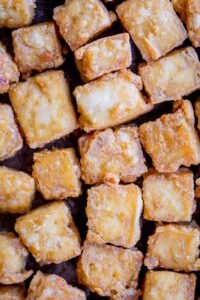Milk & Milk Alternatives

“How much milk can my kiddo have?? And what kind?”
As a pediatric registered dietitian, I often receive questions about milk. It can be confusing to find the right information for your child and your family. Let’s explore the current guidelines and discuss alternatives for those who don’t drink fluid milk, or who many need (or want) an alternative!
Infants (0-12 Months)
Breast Milk or Formula:
- Breast Milk: The Canadian Pediatric Society (CAP) recommends exclusive breastfeeding for the first six months, with continued breastfeeding alongside the introduction of complementary foods until at least 12 months.
- Infant Formula: For mothers who cannot or choose not to breastfeed, iron-fortified infant formula is the recommended alternative.
Fluid Milk:
- Cow’s milk can be offered to an infant between 9 and 12 months of age, alongside an iron-rich diet. Preterm infants or infants more at risk of iron-deficiency should wait until closer to the 12-month mark.
Plant Milks:
- Plant milks, including soy, almond, oat, and others, are not great replacements for breast milk or infant formula during the first year of life. They do not provide the necessary nutrients for infant development. However, infants or young children who have been diagnosed with a Cow’s Milk Protein Allergy (CMPA) may do well on a milk alternative as long as they are eating enough solids. Consult with a pediatric dietitian before introducing a fortified plant milk to your baby.
Toddlers (1-2 Years)
Homogenized (3.25%) Milk:
- Volume: The CAP recommends that toddlers drink no more than 16 ounces or 2 cups of homogenized milk per day. Homogenized milk is important for brain development, as it provides essential fats that are crucial at this age.
- Transition: If your child is breastfeeding, continue as long as mutually desired by parent and child, while gradually introducing homogenized milk.
Plant Milks:
- Soy Milk: Fortified soy milk is the best plant-based alternative for toddlers who cannot consume cow’s milk. Choose unsweetened, fortified soy milk with adequate protein, calcium, and vitamin D. This is alongside a solid food diet that contains a good amount of variety in foods offered and iron-rich sources..
- Other Plant Milks (Almond, Oat, Rice, Coconut, etc.): These are generally not recommended as primary milk sources for toddlers due to their lower protein content and nutritional variability. If used, ensure they are fortified with calcium and vitamin D, and consult with a pediatric dietitian.
Young Children (2-5 Years)
Low-Fat or Fat-Free Milk:
- Volume: From age 2 onward, the recommendation is 16 ounces or 2 cups of low-fat (2%, 1%) or fat-free (skim) milk per day. This helps provide calcium, vitamin D, and other essential nutrients without excessive saturated fat.
- Variety: While milk is an excellent source of calcium and vitamin D, other dairy products like yogurt and cheese can also contribute to your child’s daily dairy intake.
Plant Milks:
- Soy Milk: Fortified soy milk remains the preferred plant-based alternative, providing similar nutritional benefits to cow’s milk.
- Other Plant Milks:
- If cow’s milk or soy milk are not options, other plant milks can be considered. Choose unsweetened, fortified versions, and ensure they provide at least 8 grams of protein per cup and are fortified with calcium and vitamin D.
- Almond Milk: Often lower in protein but can be used if fortified.
- Oat Milk: Typically, higher in calories but can vary in protein content.
- Rice Milk: Generally low in protein.
- Coconut Milk: Low in protein but can be used if fortified.
What If My Child Doesn’t Drink Milk?
If your child does not drink fluid milk, there are plenty of other ways to ensure they get enough calcium and vitamin D. Some foods high in calcium:
- Yogurt: Plain, unsweetened yogurt is a great source of calcium. Opt for fortified versions for an added vitamin D boost.
- Cheese: Many types of cheese, such as cheddar, mozzarella, and Swiss, are rich in calcium.
- Fortified Plant Milks: Options like soy or oat milk are often fortified with calcium and vitamin D. Choose unsweetened versions to avoid added sugars.
- Leafy Greens: Vegetables like kale, bok choy, and collard greens are excellent sources of calcium.
- Tofu: Fortified tofu can provide a significant amount of calcium and is a versatile ingredient in many dishes. It is also a soft protein that your child might like more than meat as it is easier to chew!
- Canned Fish: Canned salmon and sardines with bones are high in calcium. Ensure the fish is low in mercury and appropriate for your child’s age.
- Fortified Orange Juice: Some orange juices are fortified with calcium and vitamin D, but limit your offering to 4 ounces or ½ cup per day.
Tips for Ensuring Adequate Calcium Intake
- Balanced Diet: Encourage a varied diet that includes multiple sources of calcium.
- Read Labels: Look for fortified foods and beverages to ensure they meet your child’s nutritional needs.
- Incorporate Fun Recipes: Make smoothies with fortified plant milk, blend leafy greens into sauces, or create fun shapes with cheese and vegetables.
- Consult a Dietitian: If you have concerns about your child’s diet, a pediatric registered dietitian can help!
Remember, each child is unique, and their nutritional needs can vary. It’s always best to consult with your pediatrician or a registered dietitian to tailor recommendations to your child’s specific needs.

Recipe of the Month:
Favourite Oven-Crispy Tofu
An easy tofu recipe to try if you’ve never prepared it! So delicious is can be served over rice with stir-fried vegetables, mixed into a ramen noodle bowl or as an easy lunch box protein – serve with little food picks for easy-eating!
Ingredients
- 1 (14 oz) container extra firm tofu, patted dry and pressed for at least 15 minutes
- 1 tablespoon toasted sesame oil, or your favorite oil
- 1 teaspoon tamari, or soy sauce
- 1/4 teaspoon salt
- 1/4 teaspoon garlic powder
- 1/4 teaspoon pure maple syrup
- 1/4 teaspoon rice wine vinegar
- 2 teaspoons arrowroot powder, or corn starch
Instructions
- Pre-heat oven to 400 degrees F. In a medium sized bowl, whisk together the sesame oil, tamari, garlic powder, maple syrup and vinegar.
- Cut the pressed tofu into bite sized pieces and place in the oil mixture. Use a spoon or spatula to stir the tofu and make sure it’s completely coated. Next, sprinkle over 1 teaspoon of the arrowroot powder and mix well until all the tofu is coated. Then, sprinkle on the remaining teaspoon of arrowroot powder and give a gentle mix just until you can’t see the dry white powder anymore.
- Line a large baking sheet with a non-stick mat or parchment paper. Pour the tofu and arrange it so that none of the pieces are touching each other. Bake tofu for about 25-30 minutes, until golden and crispy, stirring 2-3 times during the baking. Let tofu sit for a few minutes to crisp up even more before enjoying.


